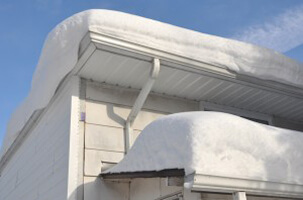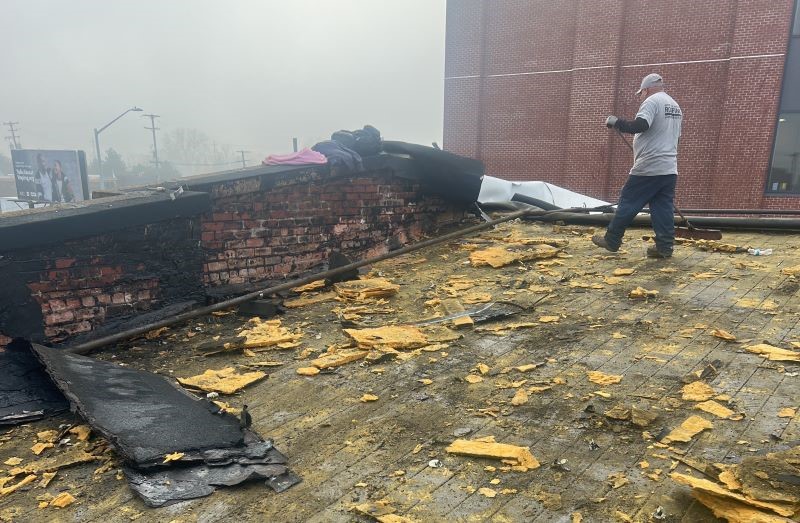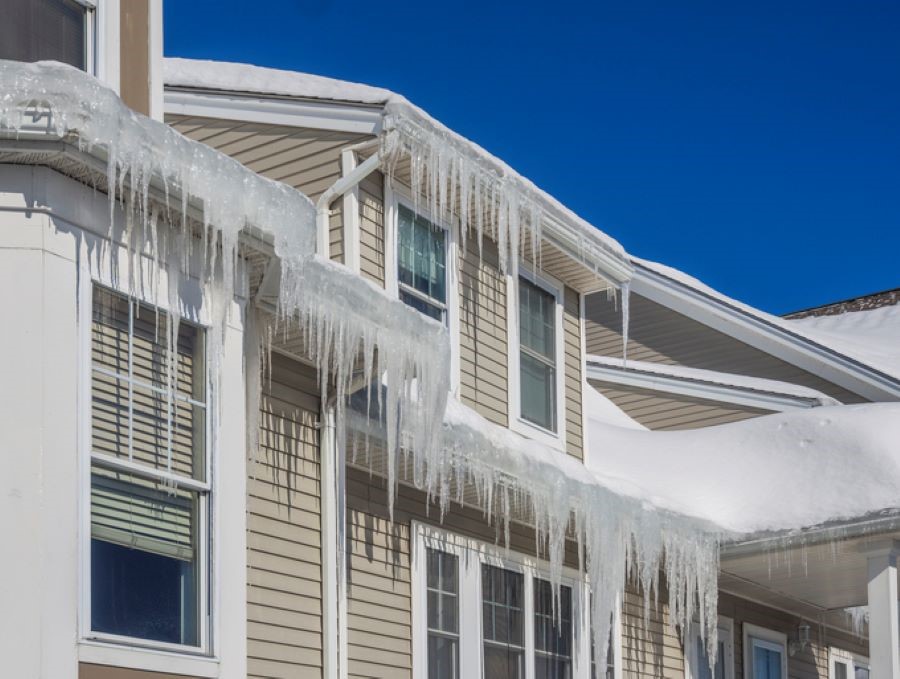 The contractors roofing Grand Rapids Michigan homes and businesses may technically compete with each other. But they’re also united against a common enemy — the dreaded ice dams of the Michigan winter.
The contractors roofing Grand Rapids Michigan homes and businesses may technically compete with each other. But they’re also united against a common enemy — the dreaded ice dams of the Michigan winter. Unscrupulous roofing companies might ally themselves with ice dams, hungry for extra work after the spring thaw. But for the best roofers in Grand Rapids Michigan, ice dams are a threat to their craft, the destroyer of quality residential roofing jobs.
Because heat rises, warm air from your home melts accumulated snow around your roof, which drips down and freezes near your eaves. This frozen block forms an ice dam, which creates a reservoir of snow melt on your rooftop. Roofing Grand Rapids Michigan homes right requires extra attention to flashing, the weatherproofing material installed underneath your shingles. But even the best roofing contractors Grand Rapids Michigan has ever seen know that over time their handiwork can call victim to ice.
But ice dams don’t just threaten your roof, they can also damage the interior of your home as well. If ice dams damage your flashing, water can seep through your roof and leak into your home, causing rot, mold, and water damage. That means your roof repair cost will only be a fraction of the needed repair work.
Roofing Grand Rapids Michigan homes requires years of experience, but some DIY home improvement experts try to handle ice dams on their own. So they head out to the yard with a hammer and chisel. This trick will destroy ice dams, but it will also destroy siding for homes, gutters, and your roof.
If you suspect an ice dam is forming around your home, here’s two simple home improvement life hacks to protect your home:
- 1. Place a fan in the attic and point it towards the ceiling. This will circulate air, lower the temperature, and help prevent ice dams from forming.
- 2. During periods of heavy winter storms, try and safely brush as much snow away from your roof as possible. The more snow you allow to accumulate on your roof, the more damage ice dams can do to your home.
Stay active against ice dams this winter, and you can avoid re-roofing Grand Rapids Michigan homes come spring.
Subscribe to West Michigan Roofing's Blog





Comments